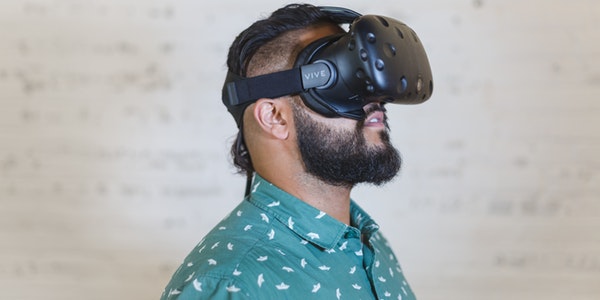History of Virtual Art

What is Virtual Art?
In general, virtual art is the use of electronic technology to create artwork. With tools such as digital painting and sculpture, visualization casks, position sensors, tactile and power feed-back systems, etc., artists could create art in a virtual world. The advantage of virtual art is observers will feel a higher sense of immersion by being pulled directly into the artwork. This high level of immersion allows for a possible personal connection. One important distinction between regular art and virtual art is virtual art allows much more control on how the viewer experiences the artwork.
Brief History
Virtual art really started to establish itself around the 1990s when creators started to combine holography, the internet, and technology. One of the first breakthrough virtual reality artworks was “The tunnel Under the Atlantic” by Maurice Benayoun in 1995. During that same year, another virtual art piece was created by Canadian art-make Char Davies called Osmose which incorporated 3D computer graphics and interactive sound and real-time motion tracking. When participants put on the VR goggles and electronic vest, they were put into different environments. Many found the experience enlightening and felt as though they discovered something about themselves they lost. Both artworks helped push virtual artwork forward into what it is today.
The year 2016 was where 2 important virtual reality equipment was released: Oculus Rift and HTC Vive. Both are revolutionary towards virtual art. They allowed artistes to create in a way they could never do before. They allowed for a much more affordable and practical way for any artist to create virtual art. Along with these devices, the INC had a segment entirely on virtual art-makers called “Virtualities”. This show helped show some of the possibilities virtual art has today that it did not have originally. Charles Sianty is a virtual artist who creates YouTube videos with virtual junkyards that Oculus Rift users can explore. Many other creators have demonstrated similar works that show how far virtual has come.
Virtual Reality Today
Virtual reality tech has significantly improved since 1990s. No longer do you need wires and electronic vests to enter the universe of virtual reality. All you need to day is a smartphone and some VR goggles. This has significantly lowered the cost of VR and increased the accessibility. There also have been improvements to interface design which helps make images look more vivid, movement more natural, and the creation progress easier. The development of Google Tilt has allowed artists to use HTC Vive goggles to create virtual art so easily that a middle schooler could do it.

Resources
If you are interested in other readings, you can click on the links below!
